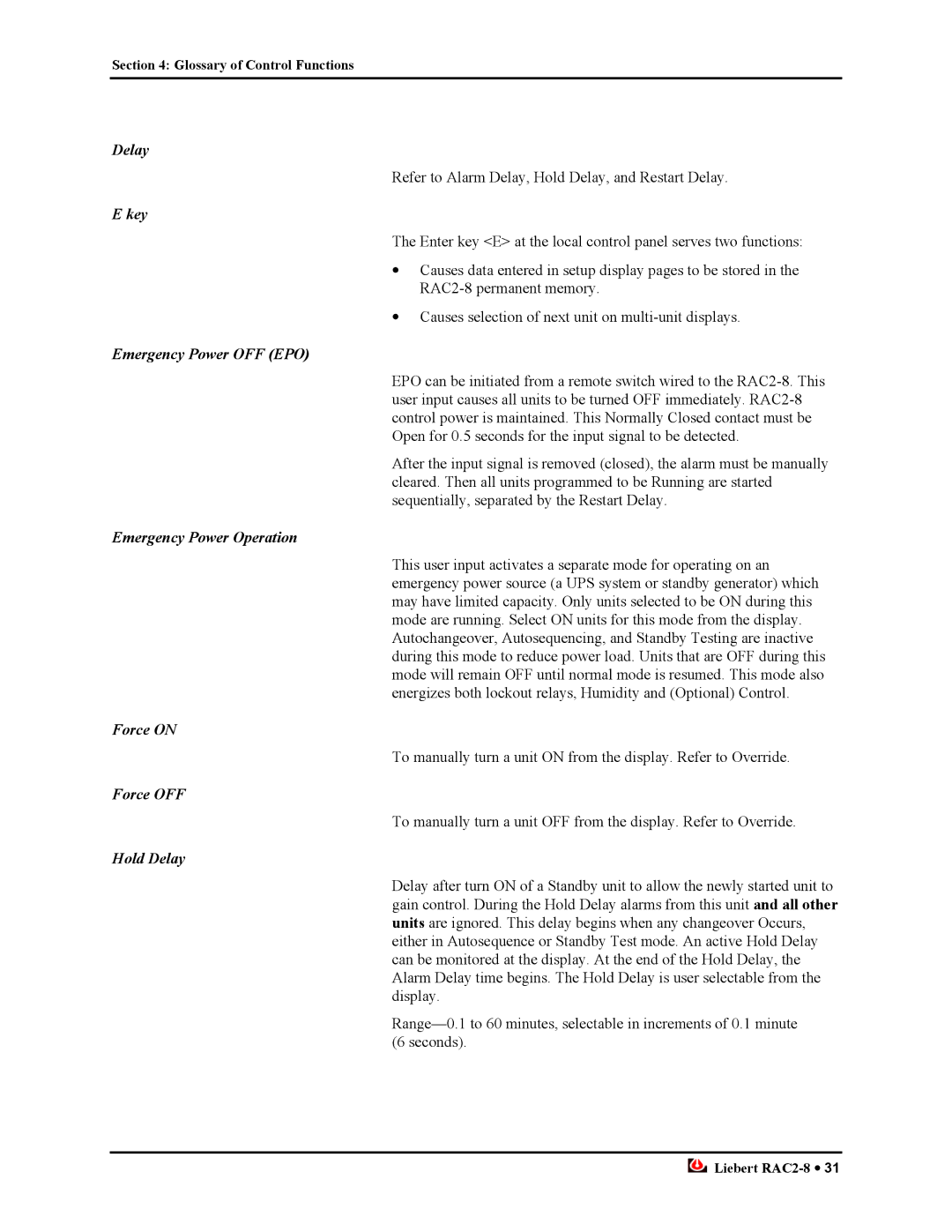
Section 4: Glossary of Control Functions
Delay
Refer to Alarm Delay, Hold Delay, and Restart Delay.
E key
The Enter key <E> at the local control panel serves two functions:
•Causes data entered in setup display pages to be stored in the
•Causes selection of next unit on
Emergency Power OFF (EPO)
EPO can be initiated from a remote switch wired to the
After the input signal is removed (closed), the alarm must be manually cleared. Then all units programmed to be Running are started sequentially, separated by the Restart Delay.
Emergency Power Operation
This user input activates a separate mode for operating on an emergency power source (a UPS system or standby generator) which may have limited capacity. Only units selected to be ON during this mode are running. Select ON units for this mode from the display. Autochangeover, Autosequencing, and Standby Testing are inactive during this mode to reduce power load. Units that are OFF during this mode will remain OFF until normal mode is resumed. This mode also energizes both lockout relays, Humidity and (Optional) Control.
Force ON
To manually turn a unit ON from the display. Refer to Override.
Force OFF
To manually turn a unit OFF from the display. Refer to Override.
Hold Delay
Delay after turn ON of a Standby unit to allow the newly started unit to gain control. During the Hold Delay alarms from this unit and all other units are ignored. This delay begins when any changeover Occurs, either in Autosequence or Standby Test mode. An active Hold Delay can be monitored at the display. At the end of the Hold Delay, the Alarm Delay time begins. The Hold Delay is user selectable from the display.
![]() Liebert
Liebert
